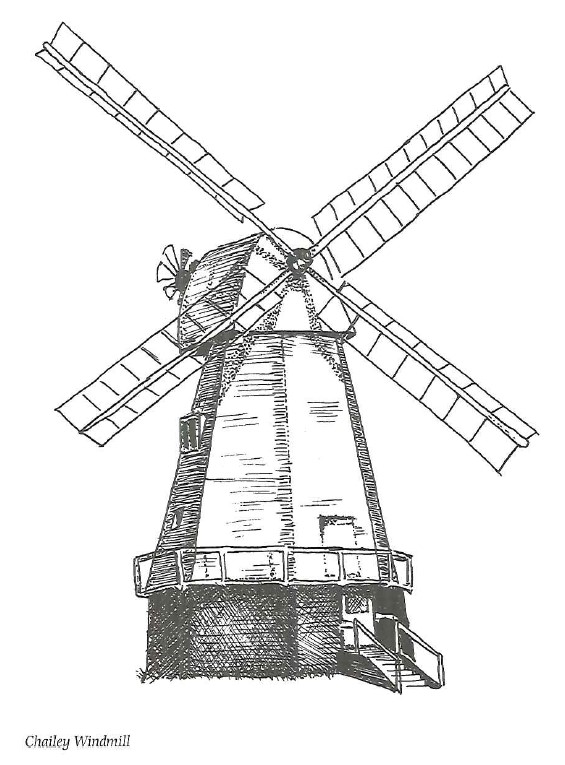The name of the village is twinned with the Great English Game. The Gray-Nicholls factory has been making cricket bats here for more than a century, created from the finest willow grown at both local plantations and those further afield and hand-finished by the craftsmen at the rate of about 150 a day.
Some of the great names of cricket have wielded a GrayNicholls down the years, with England captain David Gower a more recent customer. The towering former Sussex and England captain Tony Greig took advantage of the factory’s individual attention by having an extra long bat custom-made for him.
Stoolball, a game almost exclusive to Sussex, is also catered for here by the manufacture of the round willow bats. The business moved in recent years to a site once occupied by another of the industries of the village – the toy factory where wooden playthings were made.
The Seven Stars at Robertsbridge has many claims on our attention. Built in 1194, it is reputed to be the oldest pub in the county, to have the longest curving bar counter (22 ft) and to have the largest single timber beam in Sussex (taken from the bottom of a ship).
It was a hostelry for the monks when they were building Robertsbridge Abbey and became an inn in 1380. It was here that the Abbot of Robertsbridge came to negotiate a deal for the release of King Richard the Lionheart, imprisoned in Austria, and later a tiny room at the inn is reputed to have been the hiding place of Charles II when Cromwell’s Roundheads were on his tail, though that particular monarch seems to have had hidey-holes the length and breadth of the county! There are ghosts, of course; a monk in a red cloak who wanders the passageways, and a poltergeist who throws loaves of bread around the kitchen but who has quietened down considerably since being threatened by the landlady with exorcism.
Nothing much remains of the once noble abbey, just a few bits of refectory wall and various undercrofts which form part of the buildings of Abbey Farm, a private home. Although the abbey was not notorious, as were some other monastic houses, for laxity of morals and religion, instances are recorded illustrating that the monks did not always keep to the straight and narrow path. A royal pardon dated 17 July 1436 acquits the Abbot not only of all infringements of the statute law of which an upright man might unintentionally be guilty but also of all kinds of robberies, murders, rapes of women, rebellions, insurrections, felonies, conspiracies’ etc, provided they were committed prior to September 2nd in the 10th year of Henry VI. It makes you wonder just what did go on at the old building.
The foundation stone of the Church Mission Room in the village was one of the bosses of the abbey roof. It seems to have been used as a common quarry after the Dissolution.
In the 13th century the King granted the Abbey the privilege of holding a fair from September 14 to 16 and a market on Mondays. The village once boasted two sites for these revelries, Upperfairfield and Le Bullocks fayrefield. Fairs continued to be held here until the middle of the 20th century, though the market had degenerated into a small fortnightly agricultural sale a hundred years before.
Robertsbridge is the village, but the tiny settlement of Salehurst half a mile away across the river Rother gives its name to the parish. In the stylish church, built of Hastings sandstone, is a 12th century font with a chain of salamanders (the emblem of a Crusader) crawling around the base of the shaft. It is claimed that Richard I gave the font to the church, though no real proof exists. Could it have been as a mark of gratitude to the Abbot for the part he played in securing the King’s release?
The village used to be Rotherbridge, for obvious reasons, and a grim place Horace Walpole found it in 1752 when he paid a brief visit to this ‘wretched village’ over roads that grew bad beyond all badness.’ He wrote in a letter of his arrival with a travelling friend: “We had still six miles hither, but determined to stop as it would be a pity to break our necks before we had seen all we intended. But, alas! there was only one bed to be had: all the rest were inhabited by smugglers, whom the people of the house called mountebanks, and with one of whom the lady of the den told Mr Chute he might lie.’ The travellers made their excuses and left.
The village fought long, hard and successfully to have a bypass to rid the pretty main street of the nerve-jarring stream of traffic on the A21, though a more peaceful road is the lane that leads to Brightling. At Darvell, once a TB sanitorium, is the headquarters of the Hutterian Society of Brothers, a community of men, women and children who hold everything in common and use no currency. Some 200 people live there, making wooden play equipment in the commune’s workshop the income from which pays for their simple way of life. It has its own school and most of the clothes worn by the residents are made on the premises.
